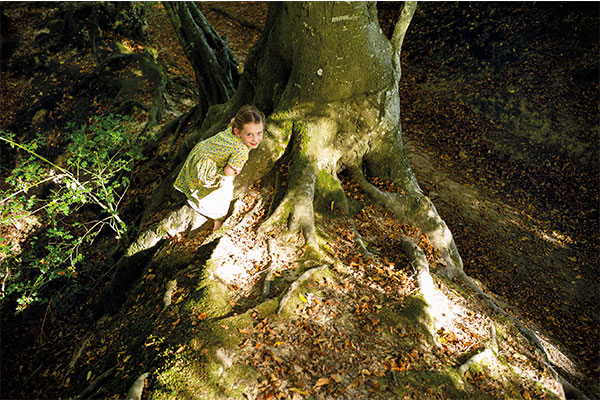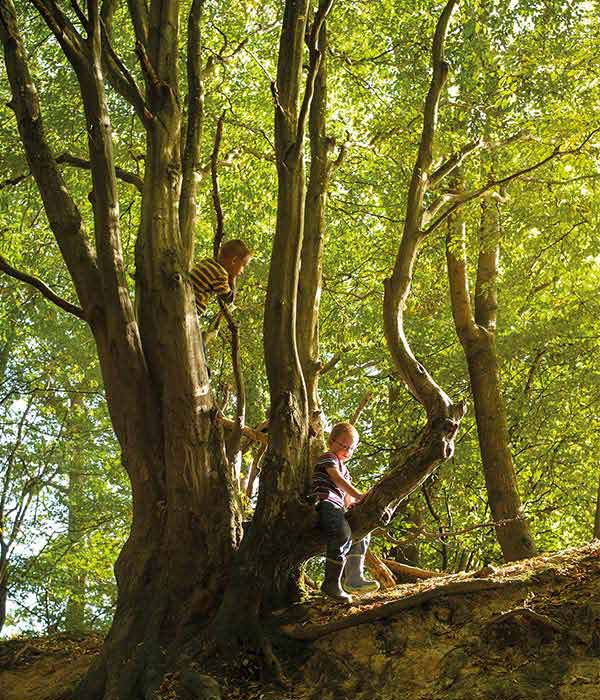Subtotal: $
Checkout-

Regenerative Agriculture
-

Into the Sussex Weald
-

The Abyss of Beauty
-

Let the Body Testify
-

Ernest Becker and Our Fear of Death
-

Singing God’s Glory with Keith Green
-

More Fish Than Sauce
-

Return to Idaho
-

The Glory of the Creatures
-

Poem: “The Path”
-

Poem: “The Berkshires”
-

The Secret Life of Birds
-

Why Children Need Nature
-

Made in the Image of God
-

The Lords of Nature
-

Editors’ Picks: The Opening of the American Mind
-

Editors’ Picks: Klara and the Sun
-

Writing in the Sand
-

City of Bees
-

Sister Dorothy Stang
-

Midwestern Logistical Small Talk
-

Covering the Cover: Creatures
-

Love in the Marketplace
-

The Elemental Strangeness of Foxes
-

Saints and Beasts
-

Astronomy According to Dante
-

The Book of the Creatures
-

Letters from Readers
-

Vulnerable Mission in Action
-

Community-Supported Agriculture in Austria’s Weinland

My first year of school smelled of cigarettes. The classroom was a box – American flag front right, window front left. (I still think of rights and lefts in flags and windows.) Most of my time was spent looking left; there was a swallow’s nest in the ivy on the next building. The teacher was a little annoyed with left-handed kids. Those are almost the only memories I can pull to the surface when my first grader asks me what first grade was like. But second grade now … that was spent almost entirely in Piney Woods. “Where’s that? Is it a storybook place?” Well, yes, child. Here’s the story.
In the Allegheny Mountains of Pennsylvania, on the edge of a hilltop clearing at New Meadow Run Bruderhof, someone long ago planted acres of white pines in perfectly straight rows. I have no idea of their intended purpose, but to a kid whose family had just moved from a crowded house on a steep city street, their fated purpose was freedom. Darting between sun-dappled trunks whose lowest limbs started just above your head; running barefoot, soundlessly, on untold layers of soft pine needles; flitting from shadow to shadow in stealth raids between the camps of pirates and princesses (fierce princesses); building ever-expanding, interconnected tree forts; collecting fallen branches for camp-craft fires; roasting doughboys, baked apples, s’mores … what memories don’t I have?
We had a classroom too. I can picture it if I try: walls full of maps, bird lists, weather charts. We put in a full and enriching academic year. It’s just that the outdoor learning was richer.
Bruderhof schools emphasize science, nature, hands-on exploration. It’s rare to find an afternoon class indoors in any weather. But our class took it up a level, thanks to sheer contrariness. Thanks, in fact, to a teacher who knew what to do with contrariness.
Our crew – well, let’s just say we had left several student teachers questioning their calling. With just sixteen kids it should have been a manageable class, but a bunch of us were still finding our way into community life, or navigating learning or behavioral difficulties, or just edgy and argumentative by nature.

All photographs by Danny Burrows. Used by permission.
Dick wareham was sixty-one years old; his health wasn’t great; he had been taking a break after decades of teaching. I don’t know if he offered to take us on or was begged to. But the day we found ourselves at the top of the clearing, facing a big man wearing a red bandana and palming a stopwatch, we all shut up and fell in line. Whatever was going on, it looked more exciting than fighting.
Dick had created an obstacle course that made use of every manmade and natural object in a half-mile loop of field and woodland, with a pavilion and playground thrown in for good measure. Stations were numbered with small wooden tags. Instead of a direct competition, we were to run against ourselves, building our speed and agility over the course of the year. Good news for one uncoordinated asthmatic.
On your mark – get set – GO! Shinny up and down the steel swing-set frame, leap in and out six open windows of the pavilion, scramble up the stone chimney and slap the number 3 tag at the top (jump from halfway down to save two seconds), sprint for the seesaw, drop and roll under the frame (dang it, snagged your shirt), teeter along the balance beam (double back if you lose your footing), take a run-off and vault the fence into Piney Woods, weave between alternating pine trunks at top speed for the length of the line (see how straight you can run when you come out), then it’s all engines firing for the finish line, as you swerve past the site of our sapling lean-to clubhouse. Every time you run this course, you’ll feel a small combustion of pride in the rising walls and roof beams, just as your oxygen levels are flagging.
Behind you, before you, at one-minute intervals, friends and foes are flying along the same track, pushing for the extra burst of speed that will throw them over the finish line in a wheezing heap of achievement.
And it was an achievement, as we found out at the end of the season when we invited our dads to run the course, with mixed and entertaining results. Dick charted all our times, and it was no secret that one particular blur of speed was always going to clock in around 5:07, but the rest of us were delighted to hear our ever-improving times announced with Olympic gravitas as the stopwatch punched down. Any incremental advance was celebrated. Nobody had to worry about occupying the last time slot, because that line was already filled. The final listing in the season’s chart read: “Dick W: 28 minutes, 365 seconds. Thanks everybody! They were all very good times, except the last one. He needs to shape up a bit!”
Naturally we had no idea that this big, slow grandpa who needed to “shape up a bit” had been voted an all-star basketball player; his college team had traveled the country facing off against schools far beyond their class. The scouts were watching, and Dick was offered a contract to play professional basketball. In the 1940s, this was the forerunner of the NBA leagues.
He could have followed his basketball dream. Instead, he walked away from the offer and enrolled in Bethany Theological Seminary in Chicago, convinced that God wanted more of him than a good game. But the seminary couldn’t see any point in burying talent, and made him its athletic director and coach of the basketball team. At the same time, he worked as a Church of the Brethren youth counselor. The teens who were having too much fun disrupting the church services were met with humor, a calm faith, and a hoops challenge.
We know about this history, because many of those former church service disrupters joined the Bruderhof movement later in the 1950s, along with Dick and his wife, Cosette, whom he had met at the youth group gatherings. In fact, one of Bethany’s best young basketball players was Glenn Swinger, later (quite a bit later) my husband’s grandfather. When they all got back together to hang out, their memories bounced back and forth like a high-speed give-and-go.
But eight-year-olds don’t bother much with what the old folks did “back when.” All we knew was that life was mighty fine. Running separate races together had shaped us into a team: less likely to tangle with each other for the fleeting satisfaction of starting a fracas, more likely to fall into close formation around the teacher as we loped up the steep hill to “our” clearing. We loved this man who never raised his voice but always kept us listening.
Staying together wasn’t mandatory, but if you were dawdling in the back, you might not discover why cirrostratus clouds could create a halo effect around the sun, and what sort of weather they foretold. Chances were you’d miss the scarlet tanager’s dash between the pin oaks. You wouldn’t know you could eat these wintergreen berries, or use this shredded birch bark to start a fire even if the wood’s a little damp. (It’s the oil.) If a meteor shower was on the sky calendar for that night, we’d be the only ones hassling our parents to come out and watch with us. “Perseid what?”
Map and compass reading, tracking, weather watching, outdoor cooking, getting along with fellow humans – it all seemed to simply happen as we went about our days. But I can remember it now effortlessly, while much that was studied in the intervening years has long been absent without leave, or care.

Community legend has it that our clearing was called “The Clearing” because the man who had a vision for a small picnic space among the trees hired a local bulldozer operator to clear some ground until he was told to stop. Unfortunately the visionary was called away on a sudden trip, while the bulldozer operator continued his stoic deforestation for quite a few too many days. This created our beloved wide clearing, with ample play and racing space, plus the necessity for some “clearing up” of the situation upon the return of the traveler.
The clearing project happened long years before we were to benefit, but that wonderful bulldozing mountain man was alive and well when our class went on a day trip to his homestead. He showed us his pit full of timber rattlers. “They’re ma’ pets,” he assured us. “They’re friendly as can be.”
“Yep, friends,” said Dick, as we trooped back to the van. “Till somebody looks sideways at someone and then it’s all rattles and fangs.” I still can’t think what he was hinting at.
If home base was the Clearing and Piney Woods, we roamed all over from there, visiting neighbors, studying Revolutionary War battlefields and fort ruins, searching for fossils at old quarries, swimming at the Youghiogheny Dam. On “free play” afternoons, it was up to you what you did with your stretch of wilderness. Build dams, catch crawdads, whittle something unrecognizable – Dick didn’t care, as long as you told him where you were going, and he could find you there.
He always knew where my friend Liz and I were. Near the stream that ran past the meadow below the school, an old apple tree on a bank had a split trunk and big level branches, one for each of us. We sprawled there like literary leopards, a stack of books balanced within arms’ reach. A wind-tousled tree is the best place to revel in tales of adventure on the high seas. (Green apples make an excellent defense against approaching marauders. Also, deck provisions.)
That apple tree is still standing, though the school building isn’t. I don’t travel back to my childhood home as often as I’d like, and when I do, I try not to exclaim, “Oh, this is gone! That is changed!” I hate hearing such laments from others; why should time freeze just because we were happy somewhere? All the same, I’m so relieved that the old tree hasn’t gotten cleared; it looks exactly the same, and I half expect a small green apple to come whizzing down through the leaves – courtesy of a shade of childhood perhaps, piqued at being interrupted mid-chapter. But then, my aim was never that good.
Piney Woods, though, is an impenetrable wall of tangled undergrowth and dead limbs. There’s no use getting maudlin. White pines don’t live forever, and the children of this community will never run out of places to play. Why should I feel as if behind the wall, fierce princesses and pirates are sleeping for one hundred years, when we’re all grown up and have small pirates of our own to contend with?
Dick wareham died in 2001, age seventy-six, from cancer. In his last days, many of us had the chance to stop by, spend time with him and Cosette, and thank him for being the teacher that he was. But the best tribute I saw was an impromptu one. Later that year, New Meadow Run hosted a youth conference. More than a hundred young people from a dozen communities took an afternoon hike across the Clearing and along the edge of the woods. Liz and I found each other and drifted toward the back – not the last, but almost. I can’t remember which one of us said, “If the number three tag is still there, let’s hit it.”
As we looked ahead to the old pavilion, someone broke out of the herd, scrambled up the stone chimney, slapped the top, and jumped down. A few moments later, someone else followed suit. We saw grins, shrugs, questions from their companions. I don’t know if they were given explanations. By the time we got there to find the familiar worn hand-and-foot-holds (but only need half of them), seven others had made the vertical pilgrimage. As far as I know, we were all the alumni at the conference.
In the end, I can’t grieve for an old forest – it’s right there when my children ask about my childhood. The afternoon sun is slanting through the long, green aisles, the needles are soft underfoot, the air smells of pine pitch, and we’re laughing as we run back toward the big man with the stopwatch who is always proud of us, whatever time we make.
Already a subscriber? Sign in
Try 3 months of unlimited access. Start your FREE TRIAL today. Cancel anytime.









































Tom Cathcart
Wonderful story, beautifully told. It brings back memories of Camp Lightfoot in the hills of West Virginia.
Maverick Le Berchier
Wonderful. This made me think hard again about my idyllic childhood, growing up at El Rancho Bonito in South San Gabriel by the Rio Hondo River.
JMaddocks
An achingly beautiful tale. Youth is an elusive state only fully appreciated in the rear view mirror. You're just too involved with it and it's wondrous intricacies at the time.